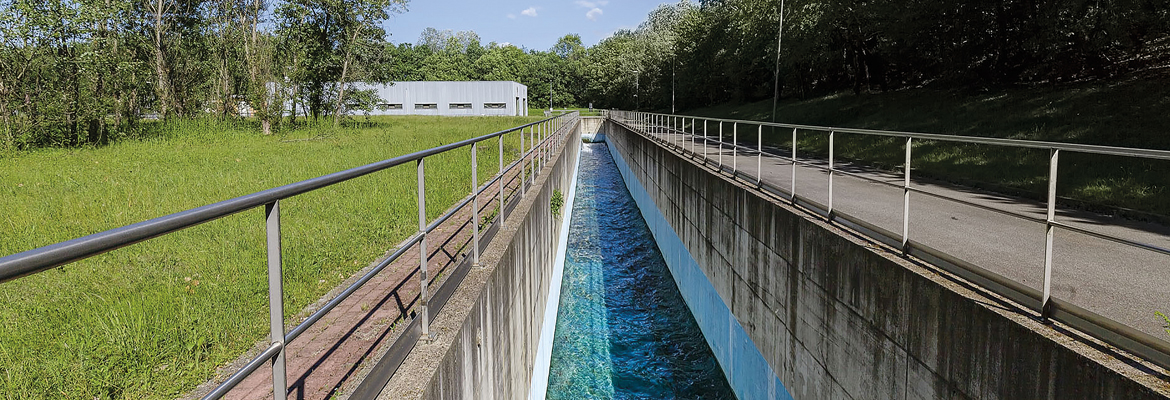The sustainable management of water resources is an extremely topical subject in today’s world. This is especially true in highly urbanised metropolitan areas, where land use and territorial fragmentation have greatly increased difficulties in the management of meteoric water. Water resources are under pressure both because of the decrease in overall availability and an increase in demand in densely populated areas.
The biggest concerns, however, derive from extreme weather events, because of their direct impact on the territory, increasing the risk of floods and causing a decline in agricultural productivity. New and updated data from EASAC (European Academies Science Advisory Council) demonstrates how extreme weather patterns have been more frequent in the last 36 years, with a significant uptick in flooding and other hydrological events compared to 2013.
On a global scale, according to the new data, these types of occurrences have quadrupled in number since 1980, and doubled since 2004, highlighting the urgent need for a serious climate-change-adaptation plan.
Adaptation and Resilience for Cities and Metropolitan Areas
The concept of resilience represents the capability of a given ecological and social system to confront an anomalous event and reorganising itself so as to preserve its essential structure, whilst at the same time adapting to new needs. This idea is also applied in the hydrological sector to preserve water resources, guarantee their efficient management and ensure adequate access to an element that is central to life and economic development. It is in this context that the integrated water service manager’s role might become predominant. This figure could intervene directly in the handling of extreme events, including restoring the role that the natural environment and other areas can have if designated to collect meteoric water. The metropolitan area is deeply connected to agricultural land, which has a very important ecological role.
Hydraulic Invariance and Plans for Sustainable Urban Drainage
Today, Lombardy is at the forefront in terms of the creation and development of sustainable drainage systems (SuDS), and its efforts are also confirmed by the recent adoption of regional regulation 7/2017 (“Regulation bearing criteria and methods for the respect of the principles of hydraulic and hydrological invariance”), which establishes a fundamental principle for urban and territorial planning: if a given territory, before undergoing a transformative intervention of urban development, produces a certain amount of water during rainfall, this quantity will have to remain constant after the transformation. This means that if parts of the territory are waterproofed or deforested, thus decreasing their hydric retention capabilities, rainwater collection works must be put in place so that the water can be returned to the natural environment once the peak of the meteorological event has passed, thus diminishing the damages and risks of flooding. The principle of hydraulic invariance will be a governance tool that municipalities employ by drafting a whole series of studies and documents that will then be inserted in the Government Plans for the territory. The law encourages interventions not only on new builds and demolition or reconstruction operations, but also on existing buildings and infrastructure, in order to improve outflows on urban surfaces; thus ‘hydrological retrofitting’ will be implemented, and, consequently, a territory’s hydrological response to intense meteorological stresses.
In response to these requirements, Gruppo CAP, which manages the integrated water service on the territory of the City of Milan, has made its technical competences and resources available to municipalities; so as to support administrations and technical offices in the drafting of the necessary documents, and in the development of a territorial plan which has due consideration of the management of rainwater. The objective of these activities is not only the resolution of crisis situations, but also the prevention of flooding through sustainable forms of urban drainage. The publication of the Manual on Good Practices in the Use of Sustainable Drainage Systems, in collaboration with the Università degli Studi di Milano, edited by Daniele Masseroni, Federico Massara, Claudio Gandolfi and Gian Battista Bischetti, has been very useful in this regard. It aims to divulge modern approaches and methods of sustainable control and management for urban outflows, which have been developed and are emerging with ever increasing clarity on an international level and particularly within the European Union.
Good Practices
Of all the initiatives related to these issues, the Flood Hide Project is undoubtedly a leading example. Its objective is the recovery and use of the old network of rural canals in the area around Milan, with a view to control flooding by creating detention basins along at-risk waterways, thus implementing the territory’s capacity for rainwater infiltration. In a territory as compromised as the one around Milan, in terms of land use, irrigation canals connected to agricultural areas spread across the territory might also serve a mitigative purpose in case of extreme weather events, reducing the risk of flooding. The collected water would thus be channelled through constructed wetlands to then be used in the agricultural sector, in a sort of hydric exchange.
There are also a whole series of interventions to be adopted in the planning and redevelopment phases, such as the use of natural depressions, or artificial basins with waterproofed surfaces, on the basis of the vulnerability of the aquifer and the presumed quality of the conferred waters. Some may be made up of open-air basins and canals, while others have underground pipelines. Another possibility involves the use of drainage trenches, long excavations that are a few metres in depth and are filled with gravel, generally constructed near ditches that are lower than the area to be drained, so the superficial outflow can temporarily accumulate within the trench and gradually filter into the surrounding soil through the sides and the bed. There also exist more complex systems like infiltration galleries, underground structures that are mainly used to collect and infilter rainwater from the roofs of residential and commercial buildings, or large permeable infiltration basins. Another example is green roofs, verdant structures that can filter and collect rainfall. These practices are already employed at the international level, making metropolitan areas into laboratories of sustainability, resilient and capable of adapting to the coming changes in climate.



